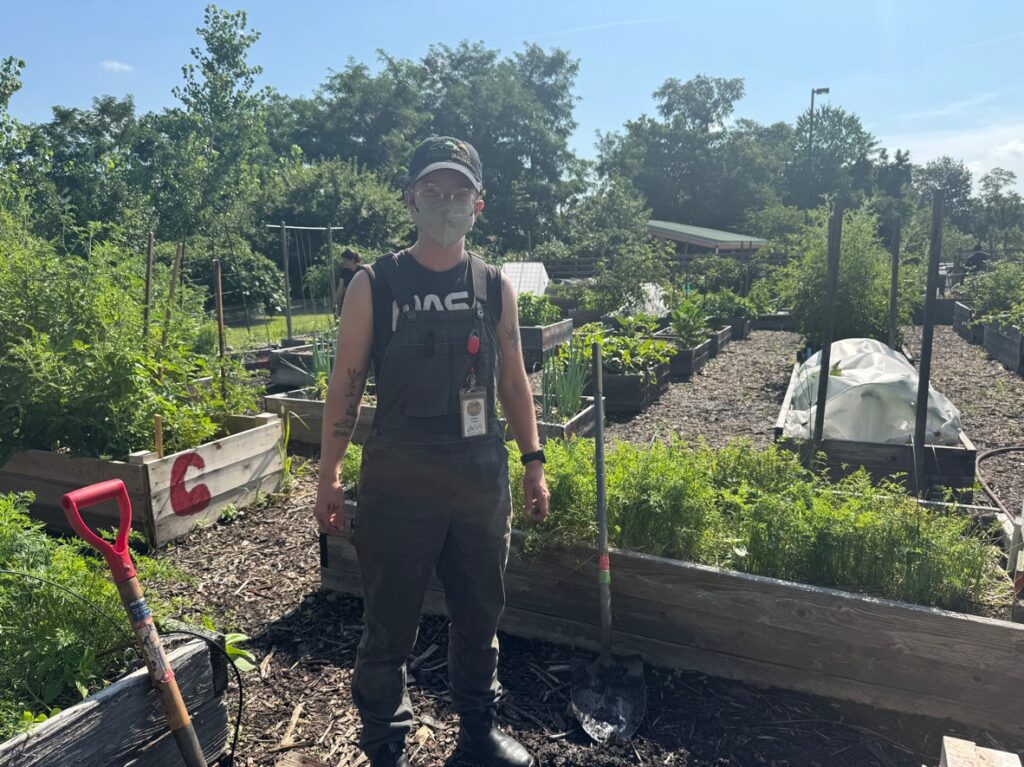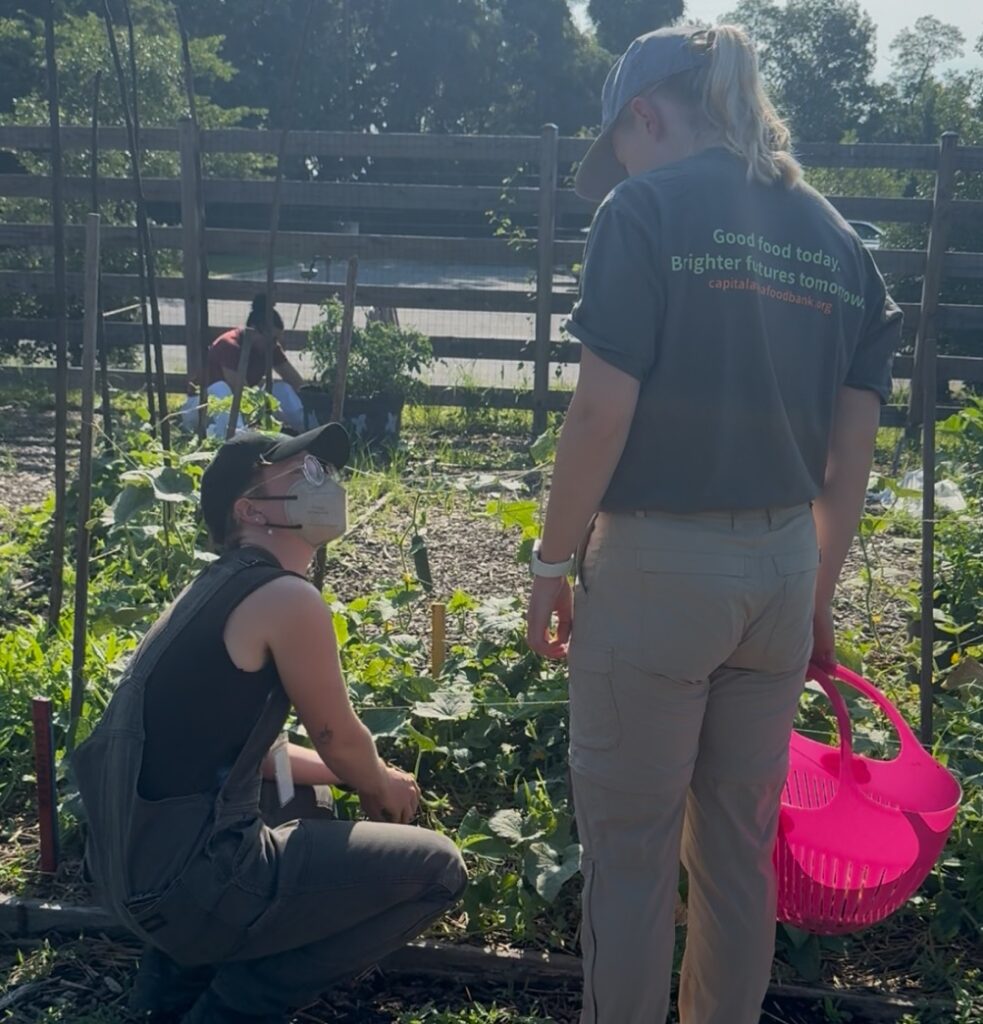Our sprawling Urban Demonstration Garden is abloom. From towering stalks of corn to bushes heavy with ripe tomatoes, our half-acre garden is thriving, thanks in large part to the dedicated work of Xandra, our food growing specialist.
We sat down with Xandra to learn more about what makes this green space flourish and how it brings fresh food and hands-on learning to our community.

Q: Tell us a little about yourself and how you got into gardening.
Xandra: I’m originally from outside of Philly, but I’ve been in the DMV for about six years now. My love for gardening started early with my grandparents, who were big gardeners. Later, I took farming jobs, including through the WWOOF program which allowed me to work on an organic farm in Costa Rica. I also worked at an art center and a school garden.
I really found my path in the world of food growing and education by doing it hands-on. I didn’t actually study agriculture in school; I majored in environmental and international studies. I also completed the DC Master Gardeners program, which connected me with amazing farms and gardens in the area.
What does it look like now, working in our garden and giving back through gardening?
This is a dream position for me because I get to combine food production and education, which don’t always come together in the same job. There’s so much room to grow here, from expanding how much we produce to offering more educational opportunities. Our garden focuses on demonstrating growing techniques and connecting with Ward 5 residents, students from all over DC, and volunteers who might not have garden space at home.
What does your role entail?
A lot! I run the half-acre garden and aim to produce at least 1,000 pounds of fresh produce each season. I handle the planting, seed starting, and harvesting, but education is a huge part too. I lead garden field trips for kids from pre-K through high school, run community workshops like our new herb series, and offer consultations for partners who want to start or maintain gardens.
What does a typical day look like for you?
There’s no typical day. I’m always checking the greenhouse (that’s seven days a week), setting up volunteer shifts, answering partner emails, planning what to plant next, watering, and of course, trying to outsmart our clever groundhogs. It’s never boring, and that’s what I love about it.
Managing a half-acre garden in the city must have its challenges. How do you do it?
Volunteers make it possible. There’s no way one person could do it alone. A strong garden plan is key, and so is being prepared for urban gardening challenges, especially pests. For example, we have five groundhogs — a mom and four babies — who love to eat everything. They’ve wiped out my bed of squash plants three times! Urban gardeners have unique challenges dealing with squirrels, deer, rats, you name it. Managing pests is a big, ongoing learning curve.

What kinds of crops do you grow?
Since we’re a demonstration garden, I plant as much variety as possible, from cucumbers to watermelons and pumpkins. There are different beds, regional crops, raised beds with intercropping, and lots of herbs. I love demonstrating how to grow herbs because they’re great for people with limited space at home. You can even grow them on a windowsill.
Where does the produce go once it’s harvested?
Most of it goes to the DC Department of Parks and Recreation, which distributes it mainly in Ward 5 through programs for seniors, families, and community events. Sometimes it goes to workshops, like art in the garden activities for young adults.
What advice do you have for someone who wants to garden but doesn’t know where to start?
Start small and remember you probably have more resources than you think. For example, if you love ice cream, finish the tub, fill it with soil, and plant lettuce. Many greens and herbs need less sun than you’d expect. Celebrate small wins, expect things to go wrong, and try again next season. That’s gardening!
What’s it like to introduce kids to the garden for the first time?
It’s the best. Some kids have never seen how corn grows or pulled a carrot from the ground. I love seeing their curiosity spark. I always remind DC students to ask their grandparents about gardening. Many families here are just one generation removed from having home gardens, so it’s really about reconnecting them with that history and showing them they can grow food too.
What’s your favorite part of the job?
Definitely the people. I love that this space brings the community together. Folks who don’t have yards can come here to grow and learn. It’s amazing to see people gain confidence. One participant told me they had no green thumb, but after my suggestion to try growing herbs, they started a windowsill garden, and now their sister does too. Those moments mean everything to me.
Want to get involved?
Come volunteer in the garden, join a workshop, or bring a class for a field trip. We’d love to grow with you!

